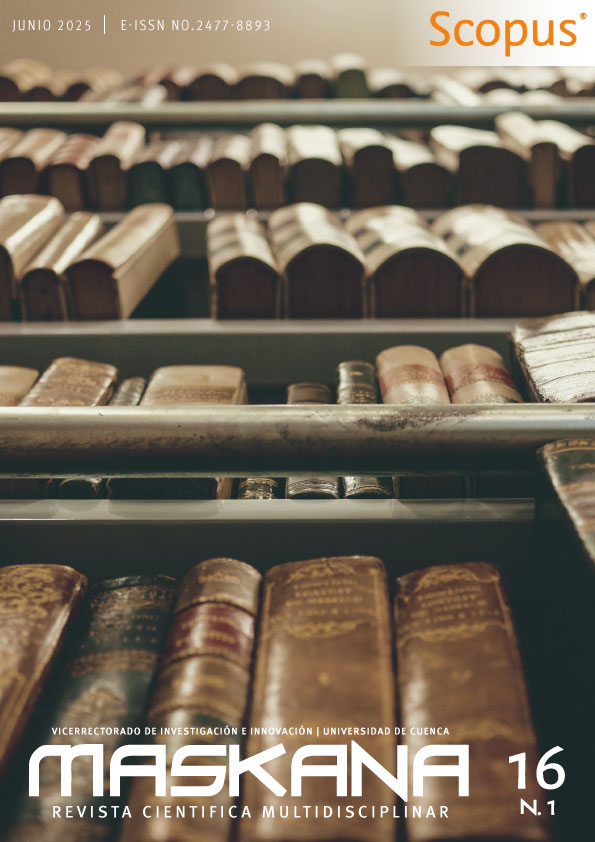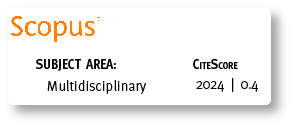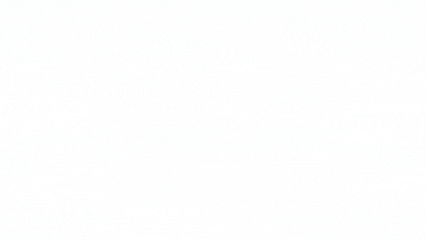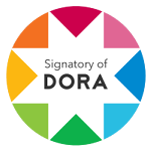Secondary Education and Creativity in Industrial Design: Reflections of Inequity
DOI:
https://doi.org/10.18537/mskn.16.01.20Keywords:
creativity inequity, industrial design, project-based , assessment, secondary educationAbstract
This article examines the relationship between secondary education and project-based creativity among Industrial Design students in Chile. Based on a hypothesis of inequity, the study explores whether educational trajectories influence the development of creative personality upon university entry. The Torrance Test of Creative Thinking (TTCT) and a socio-demographic survey were administered to 71 students (51 from design programs, 20 from other disciplines). ANOVA and Chi-square tests were used to explore associations between creativity and variables such as school type, parental education level, cultural exposure, and academic integration difficulties. The results revealed significant correlations between creativity and structural background factors, particularly school type and educational capital. A gap was also identified between students’ creative self-perception and their studio performance. The findings underscore the need for inclusive curricular design that acknowledges educational diversity. The study concludes that creativity should be understood as a situated expression, shaped by social conditions that demand ethical consideration in design pedagogy.
Downloads
Metrics
References
Aguirre, J. (2020). Dificultades en la aplicación del método fenomenológico. Utopía y Práxis Latinoamericana, 25(4), 138–151. https://doi.org/10.5281/zenodo.3931058
Alarcón, F., Castillo, A., Ureña, N., Torre, E., y Cárdenas, D. (2017). Creatividad táctica y funciones ejecutivas en los deportes de interacción. SPORT TK-Revista EuroAmericana de Ciencias del Deporte, 6(2), 147. https://doi.org/10.6018/300501
Breña, M. (2019). Una genealogía del uso para los estudios de Diseño en América Latina. Economía Creativa, 11, 61–93.
Bunge, M. (2010). Las pseudociencias ¡ Vaya timo! LAETOLI.
Cabra, J. F., y Guerrero, C. D. (2022). Regional creativity: Cultural and socio-economic differences. Journal of Creativity, 32(2), 100022. https://doi.org/10.1016/j.yjoc.2022.100022
Chávez, B., Grimaldo, E., Castillo, A., y Rodríguez, I. (2024). Perfil cognitivo de estudiantes con bajo rendimiento intelectual. Asociaciones entre inteligencia y creatividad. Actualidades Investigativas En Educación, 24(1), 1–25. https://doi.org/10.15517/aie.v24i1.55592
Corbalán, J., y Limiñana, R. (2010). El genio en una botella . El test CREA , las preguntas y la creatividad . Anales de Psicología, 26(2), 197–205.
Cross, N. (2014). Métodos de Diseño: estrategias para el diseño de productos. Wiley Limusa.
Csikszentmihalyi, M. (2013). Creativity: Flow and the Psychology of Discovery and Invention. Harper Perennial.
Desmet, P., y Schifferstein, H. (2012). Emotion Research as Input for Product Design. In J. Beckley, D. Paredes, y K. Lopetcharat (Eds.), Product Innovation Toolbox (Issue February, pp. 149–175). Wiley. https://doi.org/10.1002/9781118229248.ch6e
Donoso, S. (2019). Investigación cualitativa para Diseño y artes (Primera). OchoLibros.
Donoso, S., y Vielma, M. (2024). La creatividad en Diseño. Un aspecto poco evaluado en la enseñanza disciplinaria. Legado en Arquitectura y Diseño, 19(36), 1–19. https://doi.org/10.36677/legado.v19i36.23197
Dorst, K. (2016). Design practice and design research: finally together? DRS2016: Future-Focused Thinking, 7. https://doi.org/10.21606/drs.2016.212
Escobar, R., y Escobar, M. (2016). La relación entre el pensamiento complejo, la educación y la pedagogía. Administración y Desarrollo, 46(1), 88–99. http://esapvirtual.esap.edu.co/ojs/index.php/admindesarro/article/view/62
Eyzaguirre, S., Gazmuri, J., y Parra, G. (2022). Sesgo en las Notas de Enseñanza Media (NEM): propuestas para perfeccionar los instrumentos de selección a la educación superior. Estudios Públicos, 168, 73–106. https://doi.org/10.38178/07183089/1019220110
Faúndez, C., Letelier, B., Muñoz, M., Pino, C., Plaza, P., Silva, L., y Castillo, F. (2023). Conducta sedentaria, nivel de actividad física y desarrollo de las funciones ejecutivas en estudiantes durante Covid-19 en Chile: un estudio piloto. Retos, 47, 221–227.
Gardner, H. (2005). Arte, mente y cerebro. Una aproximación cognitiva a la creatividad. Paidós.
Grimaldo, E., y Chávez, B. (2023). Prueba de creatividad verbal de Torrance: Evidencias de validez psicométrica en estudiantado mexicano de educación primaria. Actualidades Investigativas en Educación, 23(2), 1–22. https://doi.org/10.15517/aie.v23i2.52858
Guerra, L. (2018). Controversias sobre intuición, toma de decisiones económicas. Pensamiento Crítico, 22(2), 159. https://doi.org/10.15381/pc.v22i2.14335
Hendrie, K., Arán, V., y Oros, L. (2024). Socioeconomic status effects on children’s creativity: The mediating role of executive functions. Thinking Skills and Creativity, 51, 101437. https://doi.org/10.1016/j.tsc.2023.101437
Huang, Y., Song, X., y Ye, Q. (2024). Mind wandering and the incubation effect: Investigating the influence of working memory capacity and cognitive load on divergent thinking. Thinking Skills and Creativity, 52. https://doi.org/10.1016/j.tsc.2024.101499
Kreitler, S., y Casakin, H. (2009). Self-perceived creativity: The perspective of design. European Journal of Psychological Assessment, 25(3), 194–203. https://doi.org/10.1027/1015-5759.25.3.194
Krumm, G. (2004). Creatividad verbal y rendimiento académico en estudiantes universitarios. Revista Internacional de Estudios En Educación, 4(2), 85–108.
Laime, M. (2005). La evaluación de la creatividad. Liberabit, 11, 35–39.
Lawson, B. (2005). How Designers Think. The design process demystified (fourth). Elsevier.
Li, G., Chu, R., y Tang, T. (2024). Creativity Self Assessments in Design Education: A Systematic Review. Thinking Skills and Creativity, 52. https://doi.org/10.1016/j.tsc.2024.101494
Li, X., Chen, J., y Fu, H. (2024). The roles of empathy and motivation in creativity in design thinking. International Journal of Technology and Design Education, 34(4), 1305–1324. https://doi.org/10.1007/s10798-023-09869-z
Martín, M. (2015). Abducción, método científico e Historia. Un acercamiento al pensamiento de Charles Pierce. Revista Paginas, 7(14), 125–141. https://doi.org/10.35305/rp.v7i14.161
Mayorga, M. (2019). Relación entre la creatividad, la inteligencia emocional y el rendimiento académico de estudiantes universitarios. Veritas & Research, 1, 13–21.
Moura de Carvalho, T. de C., Fleith, D. de S., y Almeida, L. da S. (2021). Desarrollo del pensamiento creativo en el ámbito educativo. Latinoamericana de Estudios Educativos, 17(1), 164–187. https://doi.org/10.17151/rlee.2021.17.1.9
Moya, E., y Hernández, J. (2014). El rol de los colegios de elite en la reproducción intergeneracional de la elite chilena The role of the elite schools in the intergenerational reproduction of the Chilean Elite. https://doi.org/10.4206/60
Muchiut, Á., Zapata, R., Comba, A., Mari, M., Torres, N., Pellizardi, J., y Segovia, A. (2018). Neurodidáctica y autorregulación del aprendizaje, un camino de la teoría a la práctica. Revista Iberoamericana de Educación, 78(1), 205–219.
Navarro, N., Arenas, J., Lineros, R., y Guerrero, H. (2022). La fenomenología como método de investigación científica : una revisión sistemática. Revista de Filosofía, 39(2), 28–54. https://doi.org/10.5281/zenodo.7297072
Pardos, A., y González, M. (2018). Intervención sobre las Funciones Ejecutivas (FE) desde el contexto educativo. Revista Iberoamericana de Educación, 78(1), 27–42. https://doi.org/10.35362/rie7813269
Peña, R., González, O., Álvarez, P., y López, D. (2023). Construyendo el perfil del alumnado con intención de abandono de los estudios universitarios. Revista Española de Pedagogía, 81(285). https://doi.org/10.22550/REP81-2-2023-03
Pinheiro, P., Putnik, G. D., Putnik, Z., y Alves, C. (2022). Design as an echo of complexity in a designed world - A reflection on design. Procedia CIRP, 109, 666–671. https://doi.org/10.1016/j.procir.2022.05.311
Pizzaleo, A., y Morcellini, M. (2003). Net Sociology. Interazioni tra scienze sociali e internet. Milano: Guerini e Associati. Guerini e Associati.
Puentes, M. (2013). La Observación Arquitectónica de Valparaíso: su periferia efímera. Ediciones universitarias de Valparaíso.
Si, S., Zhang, S., Yu, Q., y Zhang, J. (2018). The interaction of DRD2 and parenting style in predicting creativity. Thinking Skills and Creativity, 27(88), 64–77. https://doi.org/10.1016/j.tsc.2017.11.001
Simón Sol, G., Camacho Guzmán, O. E., Milena Zamora, L., Mora Espinosa, J. R., Soto Walls, L. J., y Arámbula Ponte, P. (2012). Método para el proyecto de diseño industrial. In Conceptos clave para la formación del Diseñador Industrial (pp. 45–108). Universidad Autónoma Metropolitana. Unidad Azcapotzalco. División de Ciencias y Artes para el Diseño. Departamento de Evaluación del Diseño en el Tiempo. https://doi.org/10.24275/uama.7048.7672
Smart, A. (2019). El arte y la ciencia de no hacer nada. Tajamar Editores.
Soto, V. (2015). Estudiantes de primera generación en Chile: una aproximación cualitativa a la experiencia universitaria. Revista Complutense de Educación, 27(3), 1157–1173. https://doi.org/10.5209/rev_RCED.2016.v27.n3.47562
Sözbilir, F. (2018). The interaction between social capital, creativity and efficiency in organizations. Thinking Skills and Creativity, 27, 92–100. https://doi.org/10.1016/j.tsc.2017.12.006
Stolte, M., Kroesbergen, E. H., Van Luit, J. E. H., y Oranje, B. (2024). Two sides of the same coin? How are neural mechanisms of cognitive control, attentional difficulties and creativity related? Thinking Skills and Creativity, 52. https://doi.org/10.1016/j.tsc.2024.101533
Taranto, F. (2013). Del diseño participativo a la solución estratégica de problemas complejos. I+Diseño. Revista Científico-Académica Internacional de Innovación, Investigación y Desarrollo En Diseño, 8, 40–42. https://doi.org/10.24310/idiseno.2013.v8i.12595
Vásquez, M. C. (2024). Etnografía y fenomenología: una mirada desde la lectura de El Principito. Areté, Revista Digital Del Doctorado En Educación de La Universidad Central de Venezuela, 10(19), 121–137. https://doi.org/10.55560/arete.2024.19.10.7
Vivero, L., Molina, W., y Huenulao, M. (2020). Acceso inclusivo a la educación superior en Chile: Un análisis desde el capital social de estudiantes vulnerables. Investigaciones y Experiencias.
Downloads
Published
How to Cite
Issue
Section
License
Copyright (c) 2025 Sergio Donoso Cisternas, Mitzi Vielma laguna

This work is licensed under a Creative Commons Attribution-NonCommercial-ShareAlike 4.0 International License.
Copyright © Autors. Creative Commons Attribution 4.0 License. for any article submitted from 6 June 2017 onwards. For manuscripts submitted before, the CC BY 3.0 License was used.
![]()
You are free to:
 |
Share — copy and redistribute the material in any medium or format |
 |
Adapt — remix, transform, and build upon the material for any purpose, even commercially. |
Under the following conditions:
 |
Attribution — You must give appropriate credit, provide a link to the licence, and indicate if changes were made. You may do so in any reasonable manner, but not in any way that suggests the licenser endorses you or your use. |
| No additional restrictions — You may not apply legal terms or technological measures that legally restrict others from doing anything the licence permits. |









